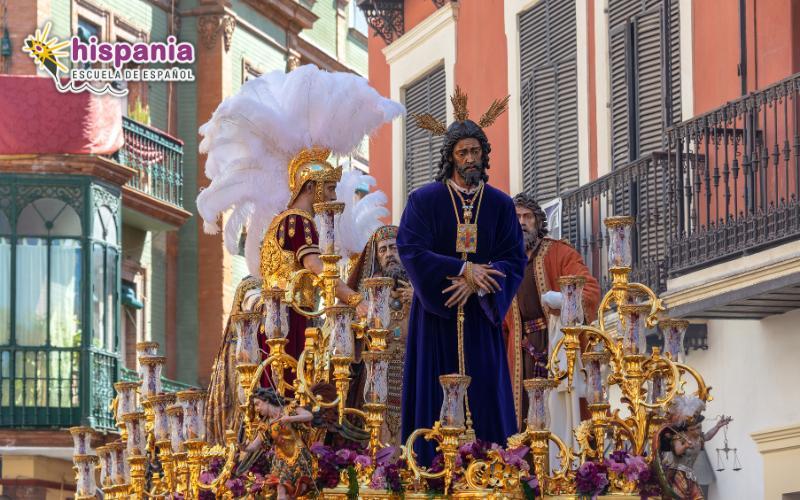
Holy Week in Spain. History and traditions of the festival
It's going to start soon Holy Week in Spain. Know what it is?
This is one of the most important holidays which are held in the whole country. In this article you will learn about:
- History of Holy Week in Spain.
- When is Holy Week in Spain.
- Traditions and customs of Holy Week in Spain.
- Where is Holy Week celebrated?
- Places to visit in Spain at Easter.
- What and when is Easter.
Do you want to know everything about this fiesta andspanish so important? Well go ahead!
History of Holy Week
We start with a little history of holy week.
What is Holy Week? whatSince when is Easter celebrated? and because? Let's see it.
What is Holy Week in Spain?
Holy Week is a Christian religious celebrationiana.
¿Holy Week is only celebrated in Spain? Well no, the truth is that it is celebrated in many countries around the world, especially in Latin America. Although it is also made in Europe.
¿Where is Easter celebrated in Europe?? In all those countries that have a strong Christian traditionianto, such as Spain, Italy, France, Portugal, Greece, Germany or Poland.
Which is the origin of Holy Week in Spain And in the rest of the world?
The celebration of Holy Week began in the primitive church of Jerusalem in the fourth century, and since then it has spread throughout the world.
Over the centuries, different rituals and traditions have been added to Holy Week, such as processions and theatrical performances, depending on the culture and region in which it is celebrated.
In Spain it is very important because our main religion is Catholicism. It is one of the few festivals that are celebrated in almost all communities in the country.
What is celebrated in Holy Week?
It commemorates the last week of life of Jesus Christ, until his resurrection. It portrays his passion for the Christian faithianOh the ordeal he had to suffer until his death.
The gospels They relate that Jesus entered Jerusalem in the midst of a large crowd that acclaimed him as the Messiah. This triumphal entry, known as the Palm Sunday, is the first day of Holy Week.
Over the next week, Jesus was betrayed, tried, tortured, and finally crucified. Days after his death, he rose from the dead, which is celebrated as the Easter Sunday.
In Spain, the most relevant tradition to honor these moments is medianyou processions in the streets in which religious statues are carried.
During this week, people gather to participate in the traditions and reunite with family and friends in some typical food of Holy Week in Spain.
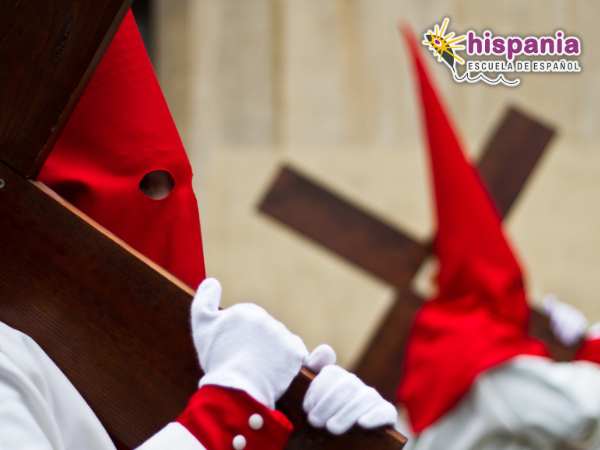
When is Holy Week celebrated?
¿When is Holy Week in Spain? The truth is every year the date changes, but almost always tends to fall into the April.
And this why? Because the Holy Week dates in Spain They are governed by the lunar calendar. The beginning of Holy Week always takes place in the first moon llena of spring.
Easter this year 2023 goes from 2 until April's 9.
Beginning of Holy Week
¿When does Easter start in Spain?? As we have explained previously, the Palm Sunday always mark the beginning of Holy Week.
This is the day on which the Messianic entry of Jesus into Jerusalem and coincides with the first moon llena of spring.
To give you an idea, the days on which the Spanish Holy Week always have the following names:
- Palm Sunday.
- Holy Monday.
- Holy Tuesday.
- Holy Wednesday.
- Holy Thursday.
- Good Friday.
- Holy Saturday.
- Easter Sunday.
El Holy Thursday and Good Friday are Holy Week holidays in Spain.
El Holy Thursday It is one of the most important days. From this day is when the Paschal Triduum.
It is when Jesus had the last supper with his apostles, just before being betrayed by Judas and all the suffering he suffered until he was crucified on the cross the next day.
Therefore, the Good Friday It refers to the death of Jesus Christ. Saturday is the day of mourning and Sunday is the day of his resurrection. This day is also known as the day of the Easter in Spain.
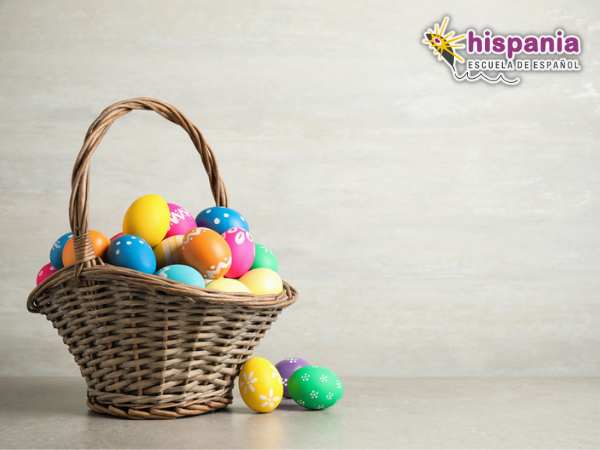
Easter traditions
Let's talk about Holy Week traditions in Spain. There are many characteristic elements in our culture, from the way of celebrating this festival to the typical food. Let's see the most notable.
Easter processions
The Holy Week processions in Spain They are a symbol of our way of celebrating this holiday.
Many tourists are attracted to these religious parades that begin the Palm Sunday and extend to Easter Sunday.
During these processions, different religious steps, which are the platforms with figures that represent scenes from the Passion of Christ, as well as the Virgin Mary and other saints.
The processions usually start at the local church and go through the streets of the historic center, passing through the most emblematic places in the city.
Most of the processions are held in the afternoon and at night, to create a more solemn and dramatic atmosphere.
Do you want to know the origin of the Holy Week processions in Spain?
The first documented procession in Spain it took place in Seville in the year 1521. Since then, the processions have spread throughout the country.
Who organizes the processions? Some local groups called brotherhoods. They organize and are also part of the Easter procession.
Each brotherhood has its own clothing and symbols, and its members carry the paso on their shoulders in a ritual that is considered a show of faith and devotion.
In many cities, Holy Week processions are very well attended and massive events, with thousands of people congregating to watch them.
The music and the religious songs that accompany the procession, as well as the smell of candles and flowers, create a unique atmosphere and an unforgettable experience for all who participate in it.
Easter steps
We have already said that the followed are structures that serve to represent important scenes of Holy Week, Some of these scenes are, for example:
- The Last Supper.
- The Crucifixion.
- The Descent from the Cross.
- The Holy Burial.
- Scenes of the Virgin Mary as La Piedad.
These Steps are platforms that are built with materials such as wood, iron, wire or papier-mâché.
The steps are usually adorned with flowers, candles and other decorative elements.
each step is carefully crafted and is considered a work of art, often centuries old.
Did you know that some are transmitted from generation to generation through the brotherhoods?
El Easter pass It is an essential element of the celebration for those who participate in it and a way to express your faith and his love for Christ and the Virgin Mary.
In case you're wondering, the largest Easter pass in Spain is the callTarascan» from the city of Granada, in Andalusia.
the tarascan It is a huge processional step that represents a woman mounted on a dragon and that is used in the Corpus Christi procession, although it is also used in some Holy Week processions.
Easter Images
The Easter images are artistic representations, mainly sculptural, that represent scenes and characters related to the Passion, Death and Resurrection of Jesus Christ.
The images of Holy Week are usually made of wood, plaster, metal or other materials, and can be of different sizes and are transported by the costaleros above the steps.
La Easter image Christ of Mercy is one of the most famous. It is in Seville and represents Jesus Christ crucified with open arms, as if he were embracing humanity. the sculptor John of Table did this work in seventeenth century.
There are other famous images, such as La Virgen de los Dolores, El Cristo de la Vera Cruz or El Cristo de la Caída.
What are the costaleros?
The "costaleros" are the ones in charge of carry the religious steps during the processions.
The costaleros support the steps on his shoulders and neck, supporting them with a kind of pillow that is placed on the head.
This job requires a lot of physical training, since the steps can weigh several tons and the bearers must walk for several hours through the streets of the city during the processions.
The costaleros are admired by all the members of the brotherhood. Can you imagine supporting so much weight on your shoulders for hours? it's pure devotion and sacrifice! If you're going to be in Spain at EasterYou will surely be overwhelmed when you see them.
The costaleros are a symbol of holy week in our country.
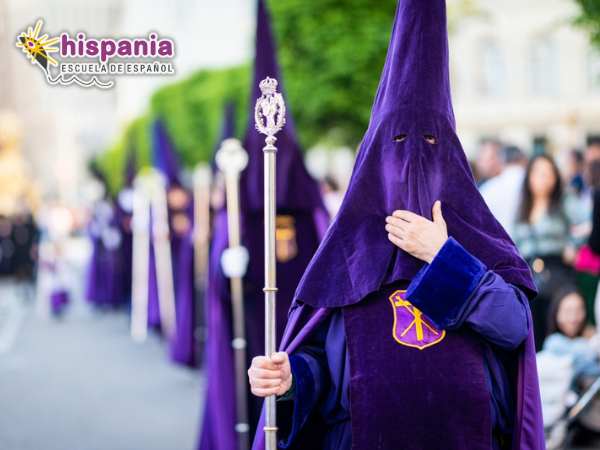
Nazarenes of Holy Week
La Holy Week and processions in Spain they wouldn't be the same without them nazarenes.
Have you ever seen some hooded men in Easter photos? They are called Nazarenes. Are members of the brotherhoods who participate in the processions and a whole symbol of Holy Week and its traditions.
They usually dress with tunics and hoods, which are a kind of hoods that cover the head and part of the face, exposing only the eyes.
The Nazarenes are an iconic figure of the Holy Week in Spain, and usually carry candles and other religious symbols during the procession.
Each sorority has its own colors and design tunic, so the Nazarenes can be easily identified by the color and style of their clothing.
The origin of the hoods dates back to the Middle Ages, when they were used as penance to expirate sins committed.
Over time, this practice evolved and became a tradition of Holy Week in Spain, which is used as symbol of humility and penance.
The Nazarenes, together with the costaleros, are very important characters in Holy Week.
Easter arrows
During Holy Week, while the processions advance, they sing arrows. Are the traditional religious songs Spain.
are interpreted a capella and they have a lot dramatics and a strong emotional component. Normally they are short songs, they don't usually last more than a minute.
The most beautiful thing is that the saetas they are sung improvising in the moment, in response to the emotion felt when viewing religious images. And who sings them? There are saetas singers called «arrowmen».
Easter French toast
The time has come to talk about the Easter food in Spain 😋
Torrijas are the traditional desserts by excellence What is eaten at Easter in Spain?.
This delicious delicacy is made with slices of stale bread dipped in milk, wine or syrup, then dipped in beaten egg and fried in hot oil.
Once fried, they are sprinkled with sugar and cinnamon. They can also be accompanied with honey, cream or custard. Truly delicious!
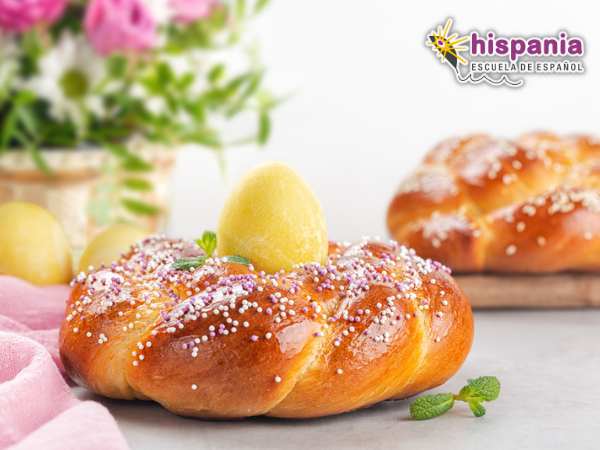
Easter Monas
The Easter Monas is another typical Easter sweets in Spain.
They are cakes decorated with figures and shapes of animals, flowers, eggs and other symbols of Easter.
Monas de Pascua are made with a sweet dough similar to bread and usually contain boiled eggs, which are decorated with different ingredients such as icing sugar, chocolate or candied fruits.
The egg can also be made of chocolate and even, sometimes, the Easter cakes are personalized for each person, with the figure of their favorite character or with a congratulatory message.
Traditionally, mona de Pascua is eaten on the last day of Holy Week, Easter Sunday.
Fritters
The buñuelos de viento are other delicious Easter desserts in Spain.
This is a sweet fried in ball shape. The dough is made with flour, water, eggs, yeast, and sometimes milk or butter. The dough is mixed and kneaded until a smooth and homogeneous texture is achieved. They are then fried in hot oil until golden brown and puffed up.
Often, they are sprinkled with sugar or dipped in honey. They can also be relatedlenar with cream or jam.
A real caloric bomb! But... and how tasty is it?
After talking about these appetizing Holy Week meals in SpainWe wouldn't be surprised if you got hungry.
But don't go eating yet! We still need to talk about something very important: where to go at Easter in Spain.
Where is Holy Week celebrated? autumn
La Holy Week is the most important religious festival in Spain and that is why it is celebrated in many cities and towns across the country.
Each region has its own traditions and rituals, and there are some that live it with more devotion.
Next, we present the places in Spain to visit at Easter who live this celebration the most.

Famous Holy Week in Spain
You do not know what to do at Easter in Spain? Don't worry. We will give you a list of places in Spain to visit at Easter most famous so that you get the best experience of these parties.
If you do it for these places, travel in Spain during Holy Week can be a great idea 😉
Holy Week Seville
La Holy Week in Andalusia It is where you live with more passion in all of Spain.
La Holy Week in Seville It is one of the most important cities as far as this celebration is concerned.
Its processions are known for their enormous beauty and for the large number of brotherhoods that are part of them.
During the week, more than 50 sororities they parade through the processions in which imposing steps and images are carried.
The Nazarenes, with their characteristic hoods, carry candles and penances as a sign of expiation, while the costaleros, both men and women, carry the steps for hours through the narrow streets of Seville's historic center.
Another of the points of interest of Sevillan Holy Week are the bands that accompany the brotherhoods. These marches are heard throughout the city, creating an exciting and solemn atmosphere.
Easter Malaga
Are you still interested in Andalusia? So you should know that the Holy Week in Malaga It is another of the big cities in which it is celebrated.
In Malaga we find some of the best processions in Spain.
The music is taken from very spectacular and colorful. The processions always begin with "The Donkey", in which the triumphant entry of Jesus into Jerusalem is represented.
In addition to the processions, Holy Week in Malaga has a wide variety of cultural and gastronomic events, such as concerts, exhibitions, tastings of typical Easter sweets and traditional dishes of Malaga cuisine.
Easter Valladolid
La Holy Week in Valladolid is known for being one of the most ancient in all Spain.
Declared as International Tourist InterestIn Holy Week in Valladolid, 20 brotherhoods participate in 33 processions.
The Spanish celebrations happen in Holy Thursday, with the most impressive steps in the city, such as "La Oración del Huerto", "El Cristo de la Luz" or "La Piedad".
Although it is not as spectacular and large as the previous ones, the funeral marches and its historical character create an unforgettable atmosphere in the streets. It will captivate you!
Easter Zamora
La Zamora city, located in the Castilla y León region, Is one of the oldest cities in Spain.
Holy Week is one of the times of the year when you can best experience the atmosphere and history of the city.
During Holy Week in Zamora, 18 emotional parades. The processions begin on Good Friday and continue until Easter Sunday.
The images covers are very beautiful and old, some are preserved from the XNUMXth century.
There are very characteristic processions in the Easter in Zamora. Some of them are:
- Procession of Silence: it is celebrated on the night of Holy Thursday. In it, the brothers parade in silence, accompanied only by the sound of drums and trumpets.
This procession is one of the curiosities of Holy Week in SpainAnd one of the most beautiful!
- Procession of the Holy Burial: takes place in the afternoon of Good Friday. The sepulcher of Christ is represented.
- Procession of Solitude: takes place at night Holy Saturday. The Virgin Mary is shown in her sadness and loneliness after the death of her son.
Holy Week Lorca
La Holy Week festival in Lorca It is one of the most notable. Lorca is a city of the Murcia.
Among the Holy Week processions, here stands out the one of Good Friday, in which the most important images of the city participate, among them the famous «Mara» (Virgin of Bitterness), which is considered as one of the most beautiful images of Spain.
During this procession there are also other very artistic images such as the "Cristo de la Sangre" or the "Cristo Yacente".
On the other hand, Holy Week in Lorca is also famous for its embroidery. These are used to decorate the costumes of the Nazarenes and the banners of the brotherhoods.
These embroideries help make the costumes of the Nazarenes and the Easter banners one of the most beautiful in Spain.
Holy Week Madrid
On the capital of Spain, Holy Week also offers very interesting events. In this Easter what is done? Well, as always, the most significant are the processions.
Some of the most popular processions are the Procession of Silence, the Procession of the Risen One, and the Procession of Solitude.
On the Holy Week in Madrid, one of the key moments is the celebration of the Offices of the Holy Thursday and the Good Friday in the Cathedral of the Almudena.
These ceremonies are presided over by the archbishop of the city. In the Trades of Holy Thursday The Last Supper of Jesus with his disciples is recreated.
In our Good Friday trades commemorates the death of Jesus on the cross. During the ceremony, the adoration of the cross is performed, in which the faithful come to kiss or touch the cross that represents the sacrifice of Christ.
On the other hand, during Holy Week in Madrid a lot of cultural and religious activities, such as art exhibitions, sacred music concerts or theatrical performances on the Passion of Christ.
After telling you about these six cities, now you will have a good idea of How is Holy Week celebrated in Spain?, right?
¿Which is the best Easter in Spain? The truth is that it is a bit difficult to choose only one. All of the ones we've talked about have interesting stuff and its own particularities.
We think that if you want to experience a very spectacular week, perhaps the best options are in Andalusia, like Holy Week in Seville. In Andalusia is where you live with more passion.
When is Easter in Spain?
Finally, we need to talk a little about Easter. what is and When is Easter celebrated in Spain??
Easter is the day that commemorates the resurrection of Jesus Christ. It is always the last day of Holy Week, Easter Sunday.
On this day special masses are made. In addition, they paint, decorate and give away the Easter eggs, which is the symbol of this day.
Some families also get together to enjoy a easter mona or eat a barbecue in the bush. Many people also use these holidays to make a field trip or to other cities.
It is a good time to make these trips because the Easter week weather in Spain is usually quite nice. Although April is a month of rain and cloudy skies, it is already spring and the temperature is beginning to warm up.
This is How is Easter celebrated in Spain?. In some cities like Valencia, the day after Easter Sunday is also a holiday, Easter Monday.
Are you going to be around these dates and want to improve your level of Spanish? Then take advantage of our face-to-face Spanish courses and our online Spanish courses en Hispania, escuela de español.
After reading this article we hope you have a better idea of what is done at Easter in Spain and how are our traditions.
In addition, we have recommended the best sites where to travel during Holy Week in Spain.
Oh, don't forget to try the typical dishes of Holy Week in Spain! We have also told you the most important 😉
Are there any questions you have about this celebration?
Do you know other places in Spain where Holy Week is celebrated with such devotion?
Post a comment and let's chat!
Article written by Carlos Martínez for Hispania, escuela de español.
More articles

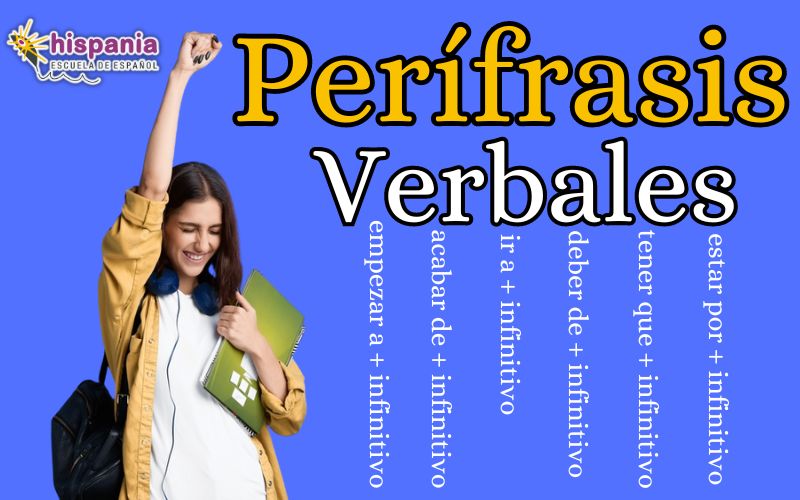
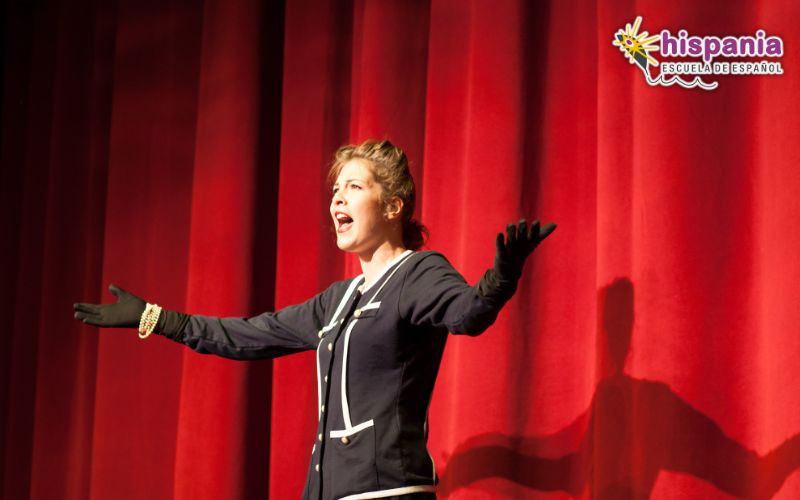

2 comments on “Holy Week in Spain. History and traditions of the festival”
Très beau article et bien détaillé, mais j'aimerais savoir un peu le volé cohesion de celebración de cette fête, merci de me répondre.
Merci beaucoup pour votre commentaire. Notre joie que tu goûtes. Si vous avez besoin de plus d'informations sur la Semaine Sainte en Espagne, vous pouvez peut-être les trouver ici:
https://es.wikipedia.org/wiki/Semana_Santa_en_Espa%C3%B1a
Kind regards.